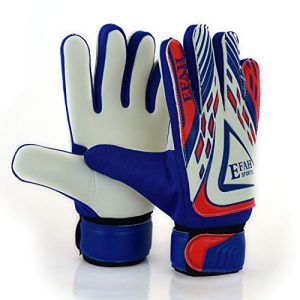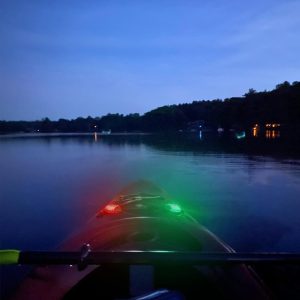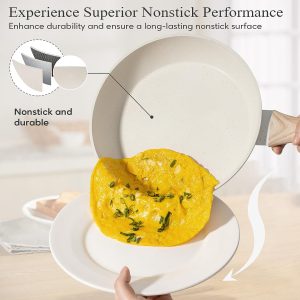Contents
- 1. Understanding Your Vessel
- 2. Environmental Conditions
- 3. Navigational Considerations
- 4. Boater Experience and Skill Level
- 5. Legal and Regulatory Considerations
- 6. Safety Equipment and Practices
- 7. Environmental Responsibility
- 8. Technological Aids and Modern Innovations
- 9. Case Studies and Real-World Examples
- Conclusion
Boating is a popular recreational activity enjoyed by millions around the world. Whether you’re cruising on a serene lake, navigating coastal waters, or embarking on a long-distance voyage, the speed at which you operate your boat plays a crucial role in ensuring safety, efficiency, and enjoyment. Determining a safe speed for your boat is not a one-size-fits-all calculation; it depends on various factors including the type of vessel, environmental conditions, and the experience of the operator.
1. Understanding Your Vessel
Different boats are designed for different purposes and therefore have varying optimal speed ranges. Understanding your vessel’s design, capabilities, and limitations is the first step in determining a safe speed.
Hull Design and Speed: Boats can have different hull designs, such as displacement, planing, and semi-displacement hulls. Displacement hulls, found on sailboats and trawlers, move through the water at slower speeds and are more fuel-efficient. Planing hulls, common on speedboats and jet skis, skim across the water’s surface and can achieve higher speeds but require more power. Semi-displacement hulls offer a compromise, capable of moderate speeds with good fuel efficiency.
Engine Power and Performance: The engine’s horsepower significantly impacts the speed potential of your boat. A higher horsepower engine allows for faster speeds, but it’s essential to match the engine’s power with the boat’s design specifications to avoid instability and excessive fuel consumption.
Load and Weight Distribution: The weight of passengers, gear, and fuel affects your boat’s performance. Overloading can reduce speed and maneuverability, while uneven weight distribution can lead to instability. Always adhere to the manufacturer’s recommended weight limits and ensure proper distribution of weight on board.
2. Environmental Conditions
The environment in which you are boating greatly influences the safe speed of your vessel. These conditions include weather, water state, visibility, and the presence of other vessels.
Weather Conditions: Wind, rain, and storms can drastically alter safe boating speeds. High winds create larger waves and can make navigation challenging, necessitating slower speeds to maintain control. Rain and storms reduce visibility, making it difficult to spot hazards and requiring reduced speeds for safety.
Water State: The condition of the water surface, whether calm, choppy, or rough, affects how fast you can safely travel. In calm waters, higher speeds might be feasible, but in rough or choppy conditions, reducing speed is crucial to avoid being thrown off course or damaging the boat.
Visibility: Good visibility allows for higher speeds as you can see and avoid obstacles. However, in fog, darkness, or heavy rain, reducing speed is necessary to ensure you have ample reaction time to navigate safely.
Traffic and Congestion: In areas with heavy boat traffic, such as marinas, docks, and popular waterways, slower speeds are required to avoid collisions and ensure the safety of all water users. Always be aware of local speed limits and no-wake zones.
3. Navigational Considerations
Safe boating speed is also influenced by navigational aspects such as water depth, channel width, and the presence of navigational hazards.
Water Depth: Shallow waters require slower speeds to prevent running aground or damaging the hull and propeller. Use a depth finder and stay within marked channels to navigate safely in shallow areas.
Channel Width: Narrow channels limit maneuverability, making slower speeds essential to avoid collisions with other vessels or the channel’s edges. Pay attention to channel markers and stay within designated boating lanes.
Navigational Hazards: Submerged rocks, sandbars, and floating debris pose significant risks to boaters. Slower speeds provide more time to detect and avoid these hazards. Familiarize yourself with navigational charts and local knowledge to anticipate potential dangers.
4. Boater Experience and Skill Level
The experience and skill level of the boat operator are critical in determining a safe speed. Experienced boaters may handle higher speeds more competently, but all operators should adhere to safe boating practices regardless of their skill level.
Training and Certification: Completing a boating safety course and obtaining relevant certifications can enhance your understanding of safe speed limits and improve your overall boating skills.
Experience in Different Conditions: Boaters should gradually gain experience in various conditions, such as different weather patterns, water states, and traffic levels. Starting with slower speeds in challenging conditions can help build confidence and skill.
Reaction Time and Decision-Making: Faster speeds reduce the time available to react to unexpected situations. Operating at a speed where you feel comfortable and have adequate reaction time is essential for safe boating.
5. Legal and Regulatory Considerations
Boating is subject to numerous regulations designed to ensure safety on the water. Adhering to these rules is not only a legal requirement but also a fundamental aspect of safe boating.
Speed Limits: Many waterways have established speed limits, particularly in areas with heavy traffic, near marinas, and in no-wake zones. These limits are set to protect both boaters and the environment. Always observe posted speed limits and adjust your speed accordingly.
No-Wake Zones: No-wake zones are areas where boats must travel at the slowest possible speed to maintain steerage. These zones are typically near docks, marinas, and shorelines to prevent damage to property and minimize erosion. Violating no-wake zone regulations can result in fines and penalties.
Local Boating Laws: Different regions have specific boating laws and regulations. Familiarize yourself with the local laws of the area where you are boating to ensure compliance and safety.
6. Safety Equipment and Practices
Having the right safety equipment on board and adhering to best practices can significantly impact your ability to maintain a safe speed.
Life Jackets and Safety Gear: Ensure all passengers have properly fitting life jackets. Additional safety gear such as fire extinguishers, flares, and first aid kits should be readily accessible.
Communication Devices: Carry a VHF radio, cell phone, or other communication devices to stay in touch with emergency services and other boaters.
Regular Maintenance: Regularly maintaining your boat’s engine, hull, and safety equipment ensures optimal performance and reduces the risk of breakdowns on the water. A well-maintained boat is more predictable and safer to operate at various speeds.
Pre-Departure Checks: Conduct pre-departure checks to ensure all equipment is functioning correctly, and inform passengers of safety procedures and locations of safety gear.
7. Environmental Responsibility
Boaters have a responsibility to protect the environment and minimize their impact on marine ecosystems. Safe speed practices contribute to environmental stewardship.
Wake and Erosion: High speeds create larger wakes, which can cause shoreline erosion and disturb marine habitats. Reducing speed in sensitive areas helps protect the environment.
Fuel Efficiency: Operating at a moderate speed can improve fuel efficiency and reduce emissions, contributing to a cleaner marine environment.
Wildlife Protection: Slower speeds reduce the risk of collisions with marine wildlife, such as dolphins, manatees, and sea turtles. Be aware of wildlife-rich areas and adjust your speed accordingly.
8. Technological Aids and Modern Innovations
Advancements in technology offer boaters new tools to navigate safely and determine appropriate speeds.
GPS and Chartplotters: GPS devices and chartplotters provide real-time data on your location, speed, and navigational hazards. Using these tools can enhance your situational awareness and help you make informed decisions about speed.
Depth Sounders and Fish Finders: These devices help you monitor water depth and avoid submerged hazards. Knowing the depth allows you to adjust your speed appropriately, particularly in shallow waters.
Weather Apps and Forecasting Tools: Modern weather apps provide up-to-date forecasts and alerts for changing conditions. Monitoring weather changes in real-time can help you decide when to reduce speed for safety.
9. Case Studies and Real-World Examples
Examining real-world scenarios can provide valuable insights into the importance of safe boating speeds.
Case Study 1: Coastal Cruising in Variable Weather: A family on a coastal cruise encounters unexpected strong winds and rough seas. By reducing speed and adjusting their course, they safely navigate back to calmer waters, avoiding potential capsizing and ensuring the safety of all aboard.
Case Study 2: Navigating a Busy Marina: A novice boater enters a crowded marina at high speed, causing a near-collision with another vessel. After this incident, they complete a boating safety course, learning the importance of adhering to speed limits and no-wake zones, which enhances their confidence and safety in future outings.
Case Study 3: Environmental Impact of Excessive Speed: A boater operating at high speed in a sensitive wetland area creates large wakes, causing shoreline erosion and disturbing local wildlife. After learning about the environmental impact, they adopt slower speeds in ecologically sensitive areas, contributing to habitat preservation.
Conclusion
Determining a safe speed for your boat involves a multifaceted approach, considering vessel characteristics, environmental conditions, navigational challenges, operator experience, legal regulations, safety equipment, environmental responsibility, and technological aids. By understanding and applying these principles, boaters can enhance their safety, protect the environment, and enjoy a more fulfilling boating experience. Always prioritize safety, stay informed, and continuously improve your boating skills to navigate the waters with confidence and care.









